
Wearable tech to get your head around
Stephen Law
Electronics Embedded Systems Engineering Software Medical Wearable Technology Editor Pick headband InteraXon medical meditation Muse wearablesMuse headband technology from Toronto-based InteraXon is a mind scratcher
Among the growing number of wearable devices to reach consumer’s hands these days, a headband created to ease or simplify the process of meditating certainly quantifies as one-of-a-kind within electronic design circles.
Created by Toronto-based InteraXon Inc., the Muse meditation headband is a research-grade EEG device that passively senses the brain activity of the headband wearer and translates it into the guiding sounds of weather to help you stay calm & focused. The science behind Muse is pretty robust – the neurofeedback has been used in the mental health field for over a decade – and its tech has been used in neuroscience research.
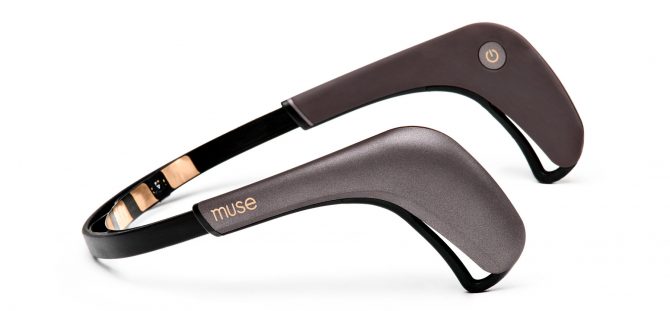
The adjustable headband is comprised of many components, including 3 reference sensors, 2 SmartSense conductive rubber ear sensors, 2 forehead sensors, LED lights, a power/pairing button, and two charging ports. Source: InteraXon
The headband uses advanced signal processing to interpret mental activity to help guide those using the device. When the mind is calm and settled, you hear peaceful weather. Busy mind? As your focus drifts, you’ll hear stormy weather that cues you to bring your attention back to your breath.
In this article, EP&T poses a few questions to InteraXon founder and chief evangelism officer Ariel Garten, who is also a psychotherapist trained in neuro-linguistic programming. Here, she dishes on what sets this award-wining electronic gadget apart and one that likely will continue evolving as new technologies enter the wearable design sector.
Q. How significantly has the technology inside Muse’s original brain sensing headband changed since original launch in 2014?
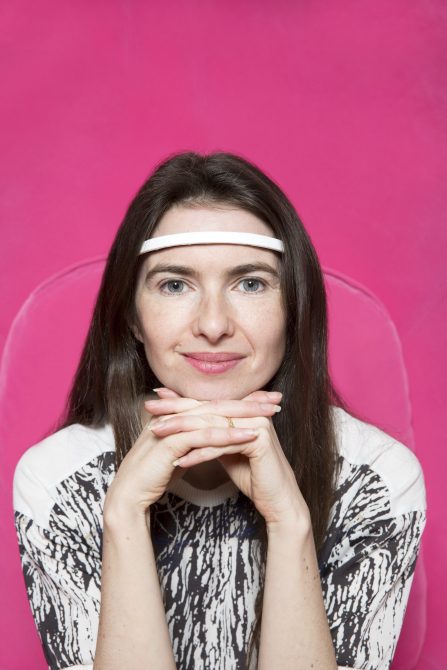
InteraXon founder and chief evangelism officer Ariel Garten.
Muse is an EEG system that uses advanced algorithms to train beginner and intermediate meditators to control their focus. Although the basic concept for the EEG sensing launched in 2014 is the same, we have improved performance on the electronic circuitry as well as the EEG sensors (electrodes). With each iteration, total size has changed and we have also improved power consumption / battery life.
In addition, new biosensors have been added in the headband models to offer more biofeedback experiences and data capture for users. For Muse 2 and Muse S, we introduced heart rate and breath sensors.
For the latest model, Muse S, the formfactor and accompanying electrodes are completely new—they are soft, flexible and washable since they are on fabric. With Muse S, new algorithms were also developed to detect and visualize sleep staging, body positions and deep sleep insights.
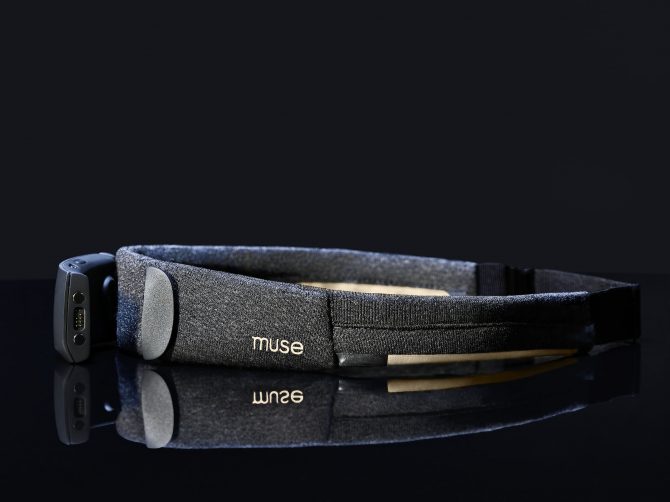
The formfactor and accompanying electrodes are completely new in the Muse S meditation headband. They are soft, flexible and washable since they are on fabric. Source: InteraXon
We’re preparing to launch a revolutionary update to our responsive go-to-sleep algorithms, coming soon. All sleep audio content will be able to fade-in and out in response to the user’s brain state. Subscribers with a Muse device will have the added benefit of using this new feature with external audio content, such as their favourite podcast or audio book. If users wake up during the night and can’t fall back asleep, this feature will detect if they have woken up and will auto play the content they fell asleep to at the beginning of the night.
Q. Which components in the meditation headband design provide it with the ability to translate brain activity?
Muse detects a range of brain electrical activity and transforms it into easily understandable experiences to provide results such as calm, active and neutral states.
The electrodes of our headbands consist of 5 silver plated pads on the forehead of the band, as well as 2 parts along the ears. These EEG sensors on the headband pick up the electrical activity of the brain at specific locations. This data is then sent to our Muse app where our algorithm analyzes the raw brain signals to identify the different brain waves (alpha, beta, gamma), as well as their power spectrum, and transforms them into many different components—noise, oscillations, non-periodic characteristics, and transient and event-related brain events. Signal processing and machine learning techniques are applied to the brain signal components to control the experience in real-time.
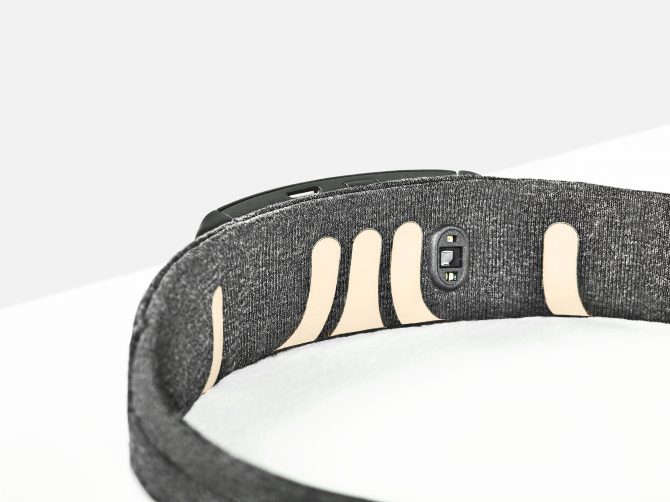
Source: InteraXon
Q. How many sensors are a part of the product’s design, and what types of sensors are used. Is there one sensor that plays a more important role than the rest?
The EEG sensors are the most important, the 3 center electrodes playing a pivotal role for signal quality as they provide the electronic reference for the others. For Muse 2 and Muse S, a gyroscope is used for movement and breath sensing and a PPG (photoplethysmography) for heart rate and breath sensing.
Q. Describe the sourcing process or challenges faced when seeking for suitable sensors for the unique purposes of the Muse design.
The electrode design for the Muse S headband was a challenging process. We sought sourcing from wearable technology companies and iterated on a custom solution which we are constantly improving. We also sourced some of the sensors from our electronics component suppliers and distribution partners who provide technical support and sales.
Q. In the end, are there multiple component sources or did you discover a single source?
We have a number of sources covering our various component requirements.
Q. Given the unique nature of Muse as a consumer product, was it important to receive very specific or specialized engineering support during the design process?
We have a wonderful team of neuroscientists, engineers and makers in-house. We have been able to produce most of the design and have protected these designs by filing over 90 design patents. Going from Muse 2 to Muse S, we moved to a softband form factor which presented the biggest challenge in terms of physical materials. We received a lot of support for the manufacturing of the fabric design, as well as for the integration of conductive electrodes on fabric.
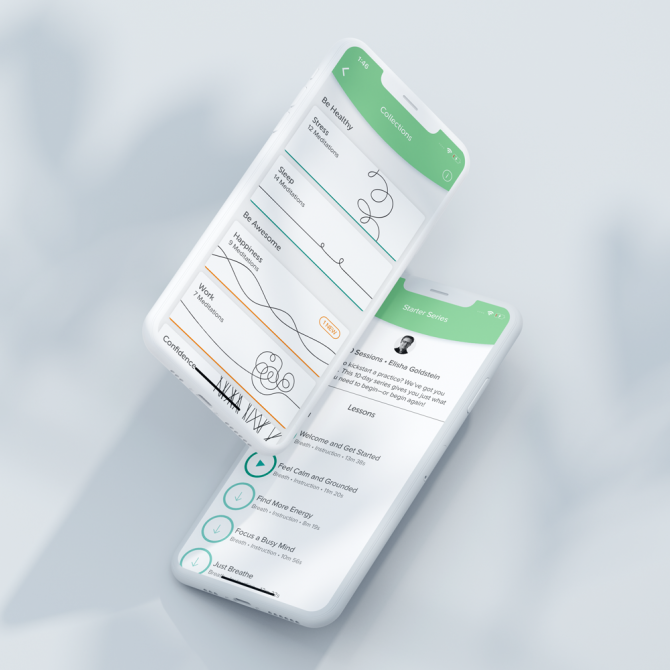
Source: InteraXon
Q. How many different engineering disciplines are involved in bringing the Muse device to market?
This involved a wide variety of teams with specialties in industrial design, electrical and electronic engineering, embedded software development process and manufacturing engineering, mechanical engineering, quality engineering, research and neuroscience. Muse headbands work in tandem with a companion Muse app. This also involves software development and data engineering for the app, cloud, and infrastructure.
Q. Given the stresses related to the ongoing pandemic, such as increased anxiety and panic experience by the general populace, has Muse seen an uptick in consumer demand for these products?
Our users logged over 5 million meditation sessions 2020 and we saw interesting shifts in their meditation behavior. For instance, many who had dropped off their meditation practice returned to meditate during the pandemic, especially during the first lockdown. You can read more about the trends we uncovered here.
Q. Is the Muse headband regarded as a wellness or medical device? If wellness, what design alterations would be required to make it a medical device?
Currently, Muse is marketed and sold as a general wellness device for the meditation and sleep markets. To become a medical device, design alterations wouldn’t be required but an FDA or equivalent submission by country/region would be needed to attain medical device status.
Q. With the rise in awareness and even misuse of data privacy, what steps did Muse engineers have to take to ensure its compliance with provincial/state laws?
At Muse, device and data security and personal privacy are a top priority in the design of our product. Since the beginning, Muse co-founder Ariel Garten along with board members like Anne Cavoukian who created the Privacy By Design framework, created The Center for Responsible Brainwave Technology to ensure that the highest standards around privacy and security were maintained. We try to keep abreast of the changing privacy framework in our primary markets around the world and continually update our transparent privacy policy (see: https://choosemuse.com/legal) to address changes in the law. We also focus on implementing physical, technical, and administrative safeguards to protect the security and privacy of personal information.
Q. What are the next biggest design alterations planned for Muse in the coming months, years?
We are constantly working on iterative product improvements to meet current customer pain points, one notable one being offering solutions for an even wider range of head sizes.
We are currently working with the National Research Council of Canada to develop a new version of our soft band that is compatible with all head mounted commercial VR/AR displays. Currently, numerous companies offer components of the required technology, including EEG, traditional physiological monitoring and VR/AR headsets. However, seamless integration that considers user-friendliness for a range of users remains lacking. Additionally, many of these components systems remain limited for use by clinical researchers. The overall outcome goal of the project is to increase effectiveness, convenience and affordability so as to deploy for home care use. This would be made available for remote monitoring by clinicians and for players in the VR/AR commercial space as a compatible hardware accessory.
When it comes to other larger functional changes, we have a few exciting plans for later this year that we can’t talk about publicly just yet—stay tuned!
